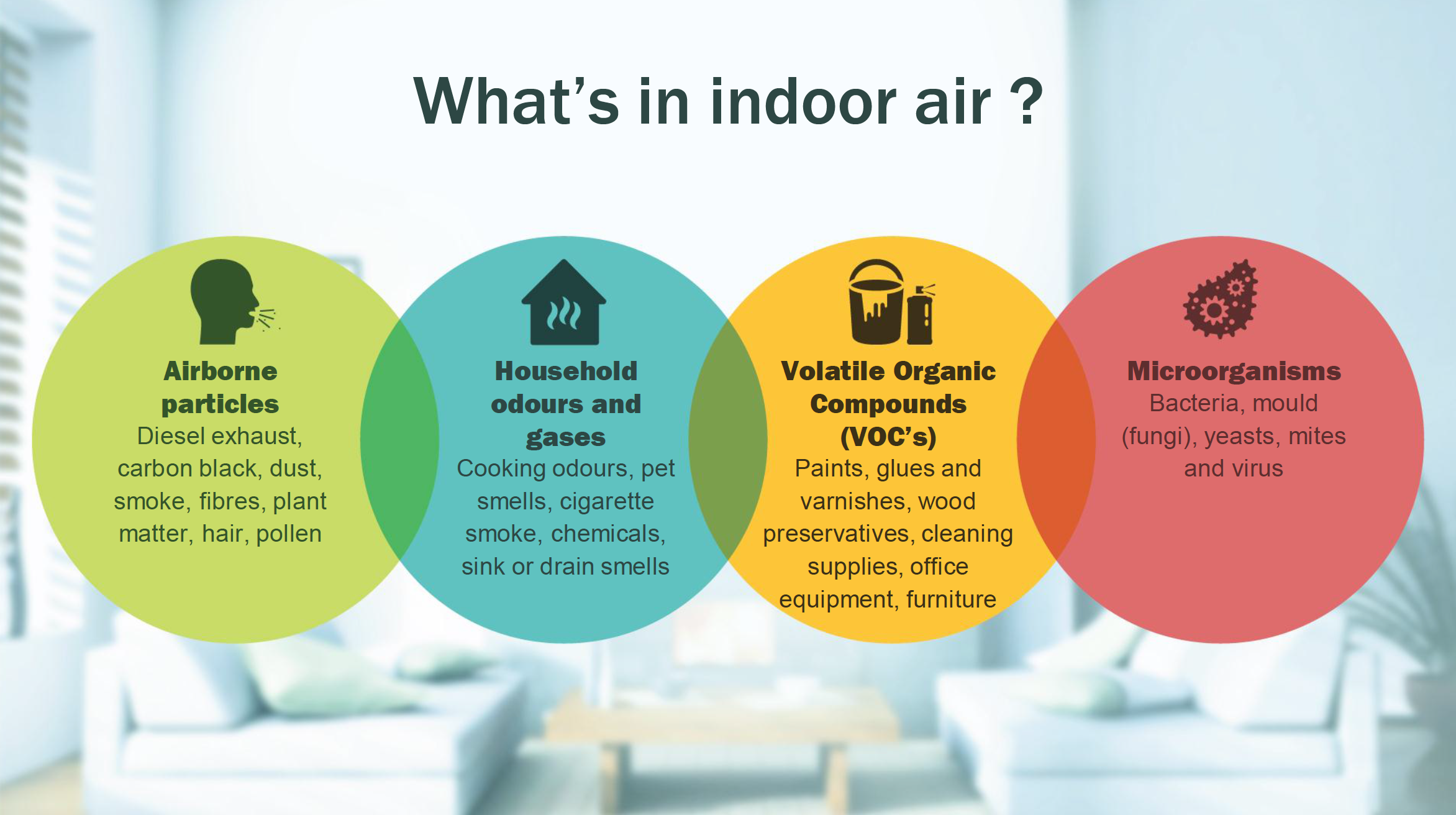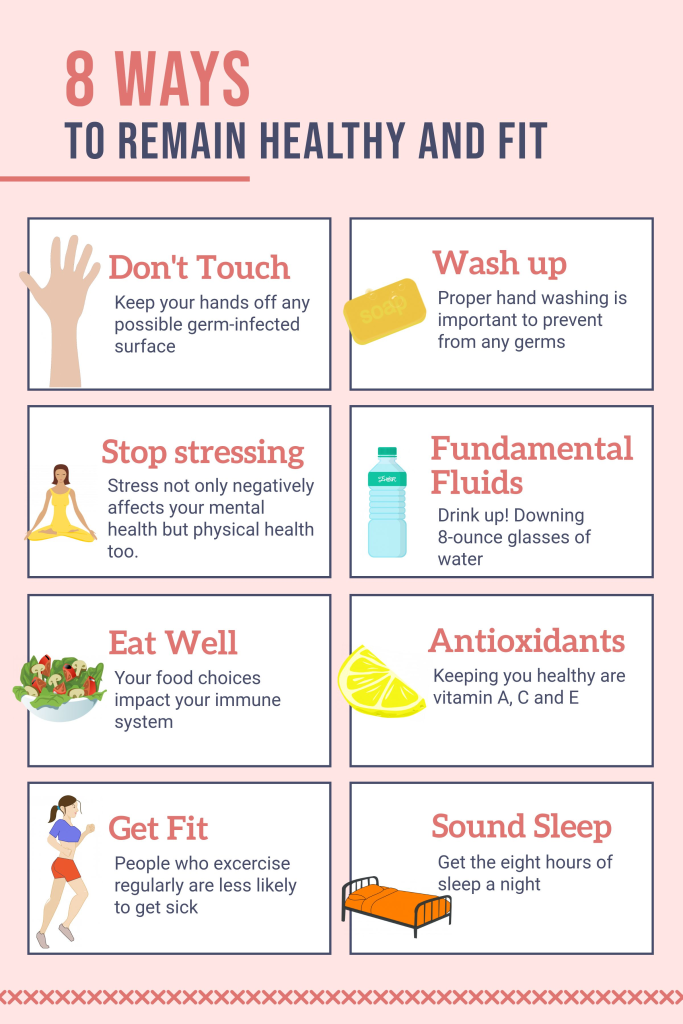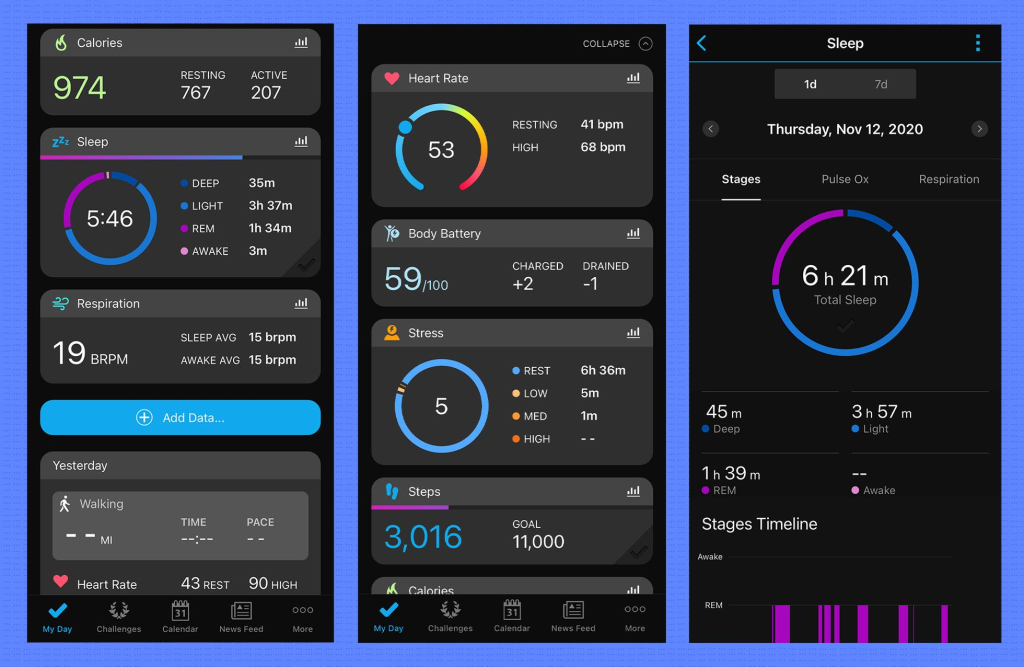Indoor air quality is a critical aspect of our health and well-being that often goes overlooked. The air we breathe indoors can significantly impact our health, influencing everything from our immune responses to cognitive function and productivity. Adequate building ventilation plays a vital role in reducing indoor air pollution, allowing for the exchange of fresher air and diluting contaminants that could pose risks to our well-being. Research underscores the connection between a healthy indoor environment and the overall quality of life, proving that the design and maintenance of our spaces can foster healthier buildings. As more individuals spend up to 90% of their lives indoors, understanding how indoor air quality affects our health is essential for creating optimal living and working environments.
Considering the quality of our indoor atmosphere, one must recognize its profound effects on human health. Terms like indoor environmental quality and indoor air safety are becoming increasingly important as we strive to understand how the spaces we inhabit influence our physical and mental wellness. Studies suggest that enhancing factors such as ventilation systems not only mitigates pollutants but also supports our cognitive performance and emotional health. With a growing awareness of indoor environments as potential sources of ailments, prioritizing air quality has emerged as a central focus for developing healthier spaces. The conversation around how atmospheric conditions shape our daily lives is paramount for fostering awareness about both personal health benefits and broader public health implications.
Understanding Indoor Air Quality and Its Health Impacts
Indoor air quality (IAQ) plays a crucial role in our overall health. Many studies highlight the impact of indoor air on health, particularly in environments where people spend most of their time, such as homes, schools, and offices. Common pollutants include volatile organic compounds (VOCs), particulate matter, and biological contaminants, all of which can significantly affect respiratory health and overall well-being. Poor indoor air quality can exacerbate conditions like asthma and allergies, leading to increased sick days and decreased productivity.
Moreover, the effects of indoor air pollution extend beyond physical health, impacting cognitive function as well. In a world where we spend around 90% of our time indoors, the importance of maintaining high indoor air quality cannot be overstated. Studies have shown that inadequate ventilation and high levels of indoor air pollutants can impair cognitive abilities, reducing focus and problem-solving skills in both adults and children. This correlation stresses the need for proper building ventilation and air filtration systems to create healthier indoor environments.
The Importance of Building Ventilation
Building ventilation is vital for ensuring adequate indoor air quality. The primary objective of proper ventilation is not only to remove indoor pollutants but also to manage heat and moisture levels within a building. As ventilation rates shifted in the 1970s towards a more energy-efficient approach, many buildings became overly sealed, which inadvertently raised the levels of indoor air pollution. A fresh approach to building ventilation that includes increased airflow and the introduction of outdoor air can significantly improve occupants’ health and well-being.
Incorporating advanced ventilation systems that enhance air flow and filtration can drastically reduce the concentration of indoor pollutants. Studies have shown that buildings with improved air ventilation experience healthier inhabitants who report enhanced cognitive function and overall satisfaction. Additionally, well-ventilated buildings can contribute to a better work environment, promoting employee productivity and reducing absenteeism due to health-related issues.
Creating Healthy Buildings for Enhanced Well-Being
To create healthy buildings, the design and maintenance of indoor spaces must prioritize air quality and overall environmental health. This includes using materials that minimize VOC emissions, effective air filtration systems, and incorporating plants that can naturally purify the air. The concept of healthy buildings extends beyond just reducing air pollution; it encompasses a holistic approach to designing spaces that promote well-being, comfort, and resilience. Enhancing indoor environments through strategic design can lead to substantial long-term health benefits.
Organizations and building managers must recognize the importance of indoor environmental quality and its direct link to occupants’ health and productivity. Regular assessments and improvements to building infrastructures can help cultivate these healthy environments. Formulating comprehensive strategies to address indoor air pollution, from enhancing building practices to incorporating technology-driven solutions, can lead to significant reductions in health risks and improve cognitive function and the quality of life for those who reside or work in these spaces.
Addressing Indoor Air Pollution: The Role of Technology
Technological advancements have opened avenues to combat indoor air pollution effectively. Innovations such as HEPA filters, air purification systems, and smart sensors that monitor CO2 levels have transformed how we can maintain indoor air quality. By harnessing these technologies, buildings can not only mitigate pollutants efficiently but also provide real-time data on air quality, leading to informed decisions regarding ventilation and air treatment.
Moreover, the integration of automated systems that manage airflow based on occupancy levels can significantly optimize energy use while ensuring that indoor air remains clean and safe. This proactive approach to addressing indoor air quality through technology not only enhances health and cognitive function but also aligns with sustainability goals in building management, creating spaces that are both efficient and conducive to occupants’ health.
Cognitive Function and Air Quality: The Unseen Connection
The connection between air quality and cognitive function is becoming ever more recognizable as research continues to uncover the myriad effects of pollution on mental health and performance. Poor indoor air quality, marked by high concentrations of pollutants and allergens, has been linked to decreased cognitive abilities, resulting in diminished focus, slower reaction times, and reduced problem-solving capabilities. People operating in such environments may find themselves struggling to maintain productivity, which can have broader implications on overall workplace effectiveness.
To combat these issues, focusing on improving indoor air quality should be a top priority for workplaces and schools alike. Implementing effective ventilation systems and routinely assessing air quality can enhance cognitive functioning among occupants. Studies have shown that environments enhanced with adequate ventilation and reduced pollutant levels lead to significant improvements in mental clarity and overall productivity. Creating such healthy indoor spaces ultimately benefits not just individual health but the organization as a whole.
Enhancing Indoor Environments through Community Awareness
Educating the community about the significance of indoor air quality is essential for fostering healthier living environments. Awareness programs that inform people about the adverse effects of indoor air pollution and how to mitigate its impacts can empower individuals to take action within their homes and workplaces. Simple changes like frequent cleaning, proper ventilation, and the selection of low-emission products can make a difference in overall indoor air quality.
Additionally, community efforts to advocate for improved building codes focused on air quality can lead to systemic changes that benefit a larger population. By promoting awareness of indoor air quality issues, community leaders, and policymakers can guide the creation of healthier educational and working environments, fostering a culture where everyone can thrive without the burden of poor air quality affecting their health.
Innovative Solutions for Indoor Air Quality Management
The search for innovative solutions to manage indoor air quality has gained momentum as concerns over air pollution rise. Emerging solutions range from advanced filtration systems that capture even the smallest allergens to biophilic design elements that integrate nature into indoor spaces. Each of these innovations contributes to cleaner air, enhancing not only health but also emotional well-being by creating nurturing environments.
Moreover, the implementation of smart building technologies allows for the adaptation of air quality management systems in real time, responding to changes in occupancy and pollution levels. Continuous improvement and adaptation of these solutions can lead to substantial reductions in health-related costs and improvements in productivity in various indoor environments, making the investment in such technologies mutually beneficial for both health and economic outcomes.
Legislation and Standards for Indoor Air Quality
As the importance of indoor air quality becomes increasingly recognized, relevant legislation and standards are being developed to ensure healthier environments. Governments and regulatory agencies are creating guidelines for acceptable air quality levels in public buildings, schools, and workplaces to mitigate the risks associated with indoor air pollution. These regulations are crucial as they set a foundation for healthy building practices and ensure that all individuals have access to safe indoor spaces.
Engaging industry stakeholders in discussions about new air quality standards can also foster collaboration among architects, engineers, and public health officials. By working together to uphold and promote health-centric guidelines, we can help pave the way for the development of healthier indoor environments, significantly improving the well-being and cognitive function of the population at large.
The Future of Healthy Buildings and Indoor Air Quality
Looking toward the future, the vision of healthy buildings will increasingly incorporate advanced technologies with a strong emphasis on indoor air quality. As architectural practices evolve, integrating sustainable materials, energy-efficient designs, and innovative air quality management systems will become standard. The resulting environments will be optimized for the health, comfort, and productivity of their occupants.
Moreover, as public awareness around indoor air quality grows, expect a surge in demand for healthier building standards and certifications. This movement will not only push developers and architects to prioritize indoor air settings but will also connect individuals with the importance of creating spaces that nurture health and well-being. Emphasizing indoor air quality as a fundamental aspect of building design will help shape the future of living and working environments.
Frequently Asked Questions
What is the impact of indoor air quality on health?
Indoor air quality (IAQ) significantly affects health by influencing respiratory conditions, allergies, and overall well-being. Poor IAQ, which includes pollutants from indoor air pollution, can lead to chronic health issues and discomfort. Regular assessments and improvements in building ventilation can help maintain a healthy indoor environment.
How does building ventilation improve indoor air quality?
Building ventilation enhances indoor air quality by ensuring a constant influx of fresh air and the removal of stale air and pollutants. Recent studies show that increased ventilation rates lead to better cognitive function and lower health complaints, highlighting the importance of proper airflow in healthy buildings.
What are the effects of indoor air pollution on cognitive function?
Indoor air pollution can impair cognitive function, leading to difficulties in concentration and decision-making. A study by Harvard showed that better air quality and higher ventilation rates directly correlated with improved cognitive performance, underscoring the importance of maintaining a clean indoor environment.
What constitutes a healthy building with respect to indoor air quality?
A healthy building is characterized by well-maintained indoor air quality, proper building ventilation, and minimal exposure to indoor air pollution. Features like effective air filtration systems, regular cleaning, and the use of low-emission materials contribute to creating a space that safeguards occupants’ health.
How does indoor air quality affect my everyday life?
Indoor air quality plays a crucial role in everyday life, influencing mood, energy levels, and productivity. Poor IAQ can lead to symptoms such as fatigue and headaches, affecting overall quality of life. Enhancing ventilation and reducing pollution sources can foster a more conducive living and working environment.
What steps can I take to improve indoor air quality in my home?
To improve indoor air quality in your home, consider increasing ventilation, using air purifiers with HEPA filters, avoiding tobacco smoke, and utilizing non-toxic cleaning products. Additionally, regular maintenance of HVAC systems can significantly reduce indoor air pollutants and create a healthier living space.
Can indoor air quality affect children’s health and development?
Yes, indoor air quality can significantly affect children’s health and development. Poor IAQ has been linked to respiratory issues, decreased academic performance, and developmental delays. Ensuring good ventilation and minimizing indoor air pollution is vital for fostering a safe and healthy environment for children.
Is there a connection between indoor air pollution and infectious diseases?
Indoor air pollution can increase the spread of infectious diseases, particularly in crowded environments with insufficient ventilation. Improved building ventilation and air filtration can reduce airborne pathogens, thus helping to minimize the risk of disease transmission indoors.
How often should I check the indoor air quality in my workplace?
It’s advisable to check the indoor air quality in your workplace regularly, ideally every season or at least twice a year. Monitoring air quality ensures a healthy work environment and can lead to improved employee health and productivity.
Why should I be concerned about indoor air quality when working from home?
Concerns about indoor air quality when working from home are vital as prolonged exposure to pollutants can lead to serious health issues, such as respiratory problems and decreased cognitive function. Improving ventilation and reducing sources of indoor air pollution can significantly enhance your work-from-home experience.
| Key Point | Description |
|---|---|
| Indoor Time | Americans spend about 80% of their lives indoors. |
| Cognitive Function | Increasing building air ventilation has shown to boost cognitive functions in workplaces. |
| Pollution Exposure | Most outdoor air pollution is actually experienced indoors. |
| Indoor Air Sources | In apartments, up to 30% of indoor air can come from neighboring units. |
| Infectious Disease Prevention | Bringing in outdoor air, improving filtration, and using HEPA filters can reduce disease spread indoors. |
| Chemical Exposure | Out of 80,000 chemicals available for commerce, only 6 have been banned by the EPA since 1976. |
Summary
Indoor air quality is crucial for maintaining our overall health and well-being, especially since we spend a significant amount of our time indoors. Research indicates that poor indoor air quality can lead to health problems, cognitive decline, and decreased productivity in spaces such as homes and workplaces. It is essential to understand the factors affecting indoor air and take proactive measures, like improving ventilation and using air quality monitors, to ensure a healthier living environment.



